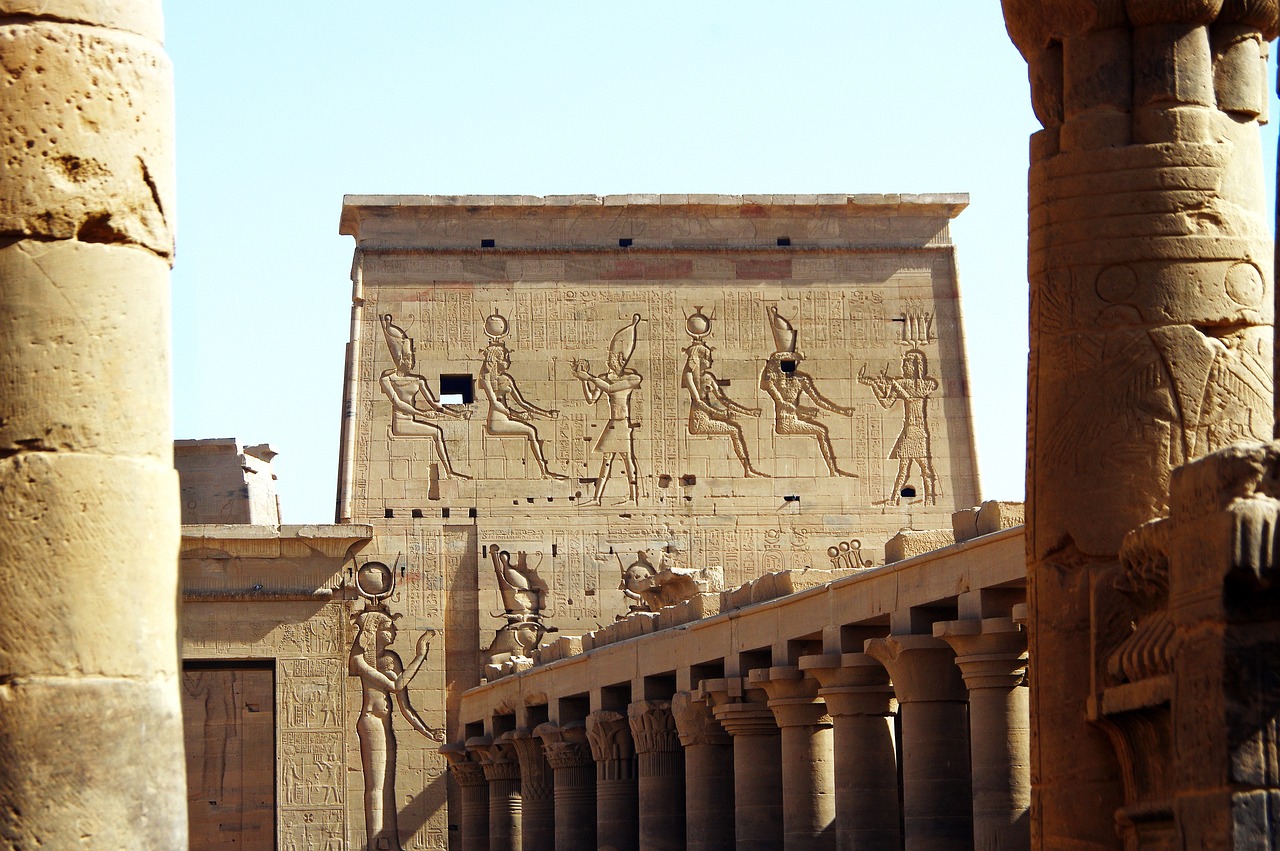Exploring the Symbols of Isis and Nut in Ancient Egyptian Art
Ancient Egyptian art, spanning over a millennium, manifests in diverse forms, primarily aiming to express the Egyptians’ perspectives on life and death. A significant portion of this art features deeply religious themes, rich with symbolism, particularly apparent in the representations of two prominent goddesses: Isis and Nut.
Isis, revered as the Egyptian Goddess of Magic, is often identified with the throne of Egypt, believed to possess the transformative power to convert a prince into a king. Over time, she assimilated attributes from other divine figures, eventually standing out as a supreme deity known for her healing and redemptive capabilities. As the sister and spouse of Osiris, she not only became the guardian of the deceased after his passing but also emerged as an icon of maternal love and devotion, especially in her role as the protective mother of Horus.
Symbolic Representations of Isis
Isis is typically illustrated in two powerful forms throughout ancient sculptures, murals, and burial artifacts. The first tends to depict her kneeling or hovering gracefully with her wings, often colored green, and wearing the hieroglyphic symbol of the throne atop her head. In certain depictions, her skin is blue, representing her deep spiritual connections. Alternatively, the second portrayal features her adorned with a headdress of cow horns and a solar disk, representing her alignment with Hathor, along with a girdle bound by a life-giving tyet knot. This visual imagery, whether as a nurturing figure holding Horus or standing with a rattle, conveys Isis as both a protector and a nurturing mother.
Each visual element in these representations carries significant meaning. The outspread wings of Isis symbolize both the power of predatory birds and the sorrow associated with mourning—reflecting her role in both life and resurrection. This is complemented by the green of her wings, denoting life and renewal in Egyptian symbolism. Additionally, her throne headdress signifies her divine authority and the essential connection between her powers and those of the kings, which further emphasizes her role in the cosmic order and the rejuvenation of life.
The second common depiction of Isis showcases her in a fully human form, characterized by yellow skin, representing immortality and purity, along with her headdress of Hathor. This portrayal reinforces her fertility and creative powers, anchoring her firmly within the realm of life-giving deities.
Isis in Context with Other Deities
Additionally, the ancient pharaoh Rameses III is shown acknowledging Isis, honoring her as a mother figure and protector of the deceased, signifying her multifaceted role in Egyptian religious life. The headdress she dons, associated with Hathor, symbolizes abundance and the cosmos, reinforcing Isis’s capabilities in creation. The colors of her girdle represent life and regeneration, further enhancing her identity as a divine nurturer.
Images portraying Isis with Horus underscore the notion of divine sustenance that Egyptian kings derived from her, positioning her as a maternal archetype crucial to the legitimacy and maintenance of kingship. Furthermore, when shown holding a sistrum, the sound from which is thought to ward off malevolence, it solidifies her significance in Egyptian rites and her protective essence.
The Role of Nut
Nut, the Egyptian Sky Goddess, sister and partner to Geb (the Earth God), and mother to Osiris and Isis, figures prominently in ancient cosmology. As a divine protector of the dead, she envelops souls in her star-studded embrace, depicted variously in blue skin with outstretched wings, a human form, or as a sycamore tree.
Like Isis, the color blue in Nut’s image denotes life and rebirth, while her stars symbolize her celestial domain and her role in welcoming the deceased into her nurturing arms. When depicted as a human, Nut’s posture and nudity articulate themes of motherhood and cosmic embodiment, while her reclining form signifies the womb from which the dead are reborn. The sun and moon traversing her body in art allude to her control over these heavenly bodies and reinforce her integral connection to Geb.
Symbolic Embrace of the Dead
Further symbolism arises when Nut appears as a sycamore tree, with her limbs extending outward to provide offerings of nourishment to the deceased. This portrayal reinforces her protective nature and signifies her intimate association with wood, often used in coffins.
The various artistic manifestations of Isis and Nut illustrate an intricate web of symbolism that conveys their divine powers and roles in the lives of ancient Egyptians. From their skin tones to their attire and actions, every aspect carries significant meaning that reflects their revered status in this rich tapestry of mythology and culture.
Isis and Nut serve as profound symbols of life, protection, nurturing, and resurrection, encapsulating the complex beliefs held by the ancient Egyptians regarding their universe and the afterlife.



